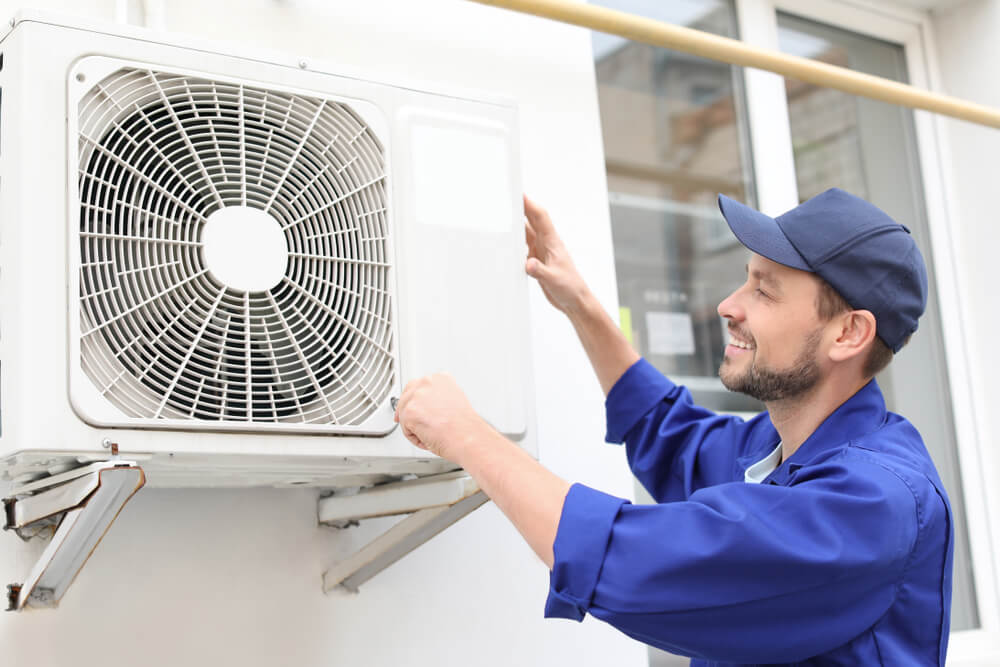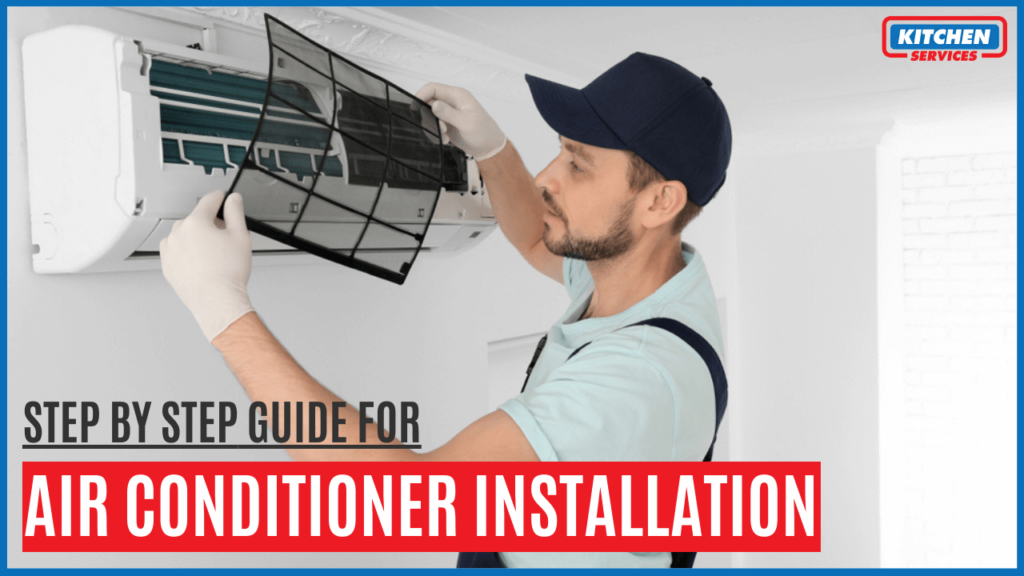Installing an air conditioner is a significant project that requires careful planning, proper tools, and attention to safety and manufacturer guidelines. Whether you’re upgrading an outdated unit or installing a new system from scratch, this comprehensive guide walks you through every critical step to ensure a successful and efficient installation. Check detail guide for air conditioner installation.
Preparation and Planning
Assess Your Cooling Needs
Start by determining the most suitable type of air conditioner for your commercial space—this could be a window unit, split system, or central air conditioning system. Assess your space and cooling requirements using factors like:
- Square footage of the area to be cooled
- Number of windows and sunlight exposure
- Ceiling height and insulation quality
- Occupancy and heat-generating appliances
Use BTU calculators or consult an HVAC technician to help select the right unit size. An undersized or oversized unit can lead to inefficiency, discomfort, and higher energy costs.
Clear and Inspect the Installation Site
Ensure both the indoor and outdoor installation areas are clean and free of obstructions. Remove any furniture, debris, or items that could block airflow or access. If you’re replacing an existing system:
- Inspect ductwork for leaks, clogs, or damage.
- Check electrical systems to ensure they meet the requirements of the new AC unit.
- Upgrade circuit breakers or wiring if necessary.
Choose an Ideal Location for the Units
Outdoor Unit Placement:
- Choose a level, stable surface such as a concrete pad or wall bracket.
- Make sure the unit is placed in a shaded, well-ventilated area, away from direct sunlight or high foot traffic.
- Keep at least 12–24 inches of clearance on all sides for proper airflow.
Indoor Unit Placement (Split Systems):
- Mount at least 7 feet above the floor for optimal cooling.
- Avoid placement near heat sources, direct sunlight, or obstructions like curtains or furniture.
Plan for Condensate Drainage
The air conditioner removes moisture from the air, which must be properly drained. Plan where the condensate drain line will discharge—typically to a floor drain, condensate pump, or outdoor area.
Consult HVAC Professionals

If you are unfamiliar with refrigerant systems, local building codes, or electrical work, it’s strongly advised to consult a HVAC contractor in Los Angeles. Professional guidance ensures safe installation and helps prevent costly mistakes.
NFPA guidelines for Air Conditioner Installation

Before talking about NFPA guidelines for installing an air conditioner unit let us see what NFPA is. So, NFPA stands for National Fire Protection Association. The National Fire Protection Association (NFPA) is a worldwide self-funded and nonprofit organization that was founded in 1896, this organization is dedicated to eliminating any kind of haphazard like death, injury, property, and economic loss caused due to fire, electrical and related dangers.
- Use listed and labeled equipment (UL or equivalent).
- Follow local codes and NFPA standards (esp. NFPA 70 & 90A/90B).
- Install a dedicated electrical circuit with correct breaker size.
- Provide a disconnect switch near the unit.
- Ground the unit properly as per NEC.
- Use fire-rated duct materials and install fire dampers if needed.
- Ensure filters and insulation are non-combustible or fire-rated.
How to install Air Conditioner- A Step by Step Process?
Here is your step by step air conditioner installation guide:
Inspection
- The HVAC specialist assesses the space and determines a suitable air conditioner.
- Domestic or split systems are commonly chosen for households.
- Indoor and outdoor units with refrigerant pipes are installed.
- Newer systems may require more space than older ones.
Removing Existing Outdoor Unit
- Recovery machine and tank used to safely remove refrigerant.
- Wiring disconnected from old system for removal.
Preparing Pad for Outdoor Unit
- Replace old unit’s pads with composite pads for stability.
- The composite pad absorbs vibrations and reduces noise.
- Ensures outdoor unit remains level and minimizes potential damage.
Removing and Replacing Indoor Evaporator Coil
- A cased coil with an insulated cabinet is recommended.
- Panels provide easy access for repairs.
- The uncased coil requires preparation work on the supply plenum.
- Drain pipe considerations for uncased coil.
Removing and Replacing Refrigerant Lines
- Two copper lines for refrigerant travel.
- Old and new oils should not mix to prevent damage.
- Hangers installed to secure refrigerant lines.
- Low-voltage control wire connects thermostat to furnace and outside unit.
Setting Up Outside Unit
- Place condenser on composite pad.
- Inspect for damages and fit refrigerant lines in service valve.
- Melt copper lines for leak-free connection.
Installation of Filter Dryer
- Installed in condenser to absorb moisture and provide filtration.
- Positioned close to indoor coil’s expansion valve for protection.
Installation of Wiring
- Mount service disconnect box using existing power supply.
- Fused box recommended for overcurrent protection.
Condensate Drain Line Installation
- Primary and secondary drains connected to PVC pipe.
- Condensate pump installed if no floor drain available.
Testing
- Turn on air conditioner for 15-20 minutes to allow refrigerant flow.
- Commission unit to ensure proper functioning.
- Confirm everything is in good shape before leaving.
- Validates manufacturer’s warranty.
Also Read: Types of Commercial Air Conditioning
Important Considerations and Final Tips
Always Follow Manufacturer Guidelines
Refer to the installation manual provided by the manufacturer for model-specific requirements. This includes torque specs, wiring diagrams, electrical connections, and clearance measurements. Following these guidelines is especially crucial when dealing with components like the indoor evaporator coil, copper line set, and refrigerant lines used in your air conditioning system.
Ensure Proper Unit Mounting
Both the indoor and outdoor unit should be mounted securely, level, and on a solid base to prevent vibrations, noise, or damage over time. Whether installing a window air conditioner, air conditioning units, or full heating and air conditioning systems, ensure all parts including sheet metal brackets or supports are properly fixed. The cool air flow also depends on top of the furnace being clear and unobstructed.
Check for Ventilation and Airflow
Avoid blocking any intake or exhaust vents. The condenser requires proper airflow for heat dissipation, and the evaporator needs unobstructed air return and supply. This is vital when working with window AC units installed in window frames or any ducted system.
Schedule Regular Maintenance
Even after proper installation, regular servicing is essential:
- Clean or replace filters monthly
- Clear the condensate drain line or service the drain or condensate pump
- Have annual inspections by professionals
This helps in maintaining peak performance of all air conditioning systems and ensures cool air delivery without strain on components like the electric panel.
Prioritize Safety at Every Step
Turn off all power before beginning any work at the service disconnect box or electric panel.
Wear gloves, eye protection, and appropriate footwear. Comply with local building codes and EPA refrigerant handling laws, especially when working with refrigerant lines.
Whether you’re planning to install a window air unit or maintain a commercial system, always remember: safety and precision are key.
Final Word
Air conditioner installation is a detailed process that demands precision, planning, and adherence to safety standards. While some handy homeowners may tackle basic aspects, involving a qualified HVAC technician—especially for refrigerant charging and electrical connections—ensures the system runs efficiently and safely for years to come.
Common FAQs About Air Conditioner Installation
What is Covered by NFPA 90A?
NFPA 90A covers the construction, installation, operation, and maintenance of air conditioning and ventilating systems that include filters, ducts, and all other related equipment, to protect any life and property getting damaged from fire, smoke, and gases caused by fire or conditions having indicators similar to fire.
What is Covered by NFPA 90B?
NFPA 90B covers the installation, maintenance, construction, and operation of all those systems that are used for heating and cooling purposes, for example, ducts, filters, and all other equipment.
The standard will apply to any system that moves environmental air in:
- All those spaces that are less than 25,000 square feet.
- All the buildings are about three stories or taller.
- One or two-family homes
Other systems that are included in the standard are:
- Ventilation and AC systems that are incorporated with building construction.
- Approval testing.
- Air distribution, HVAC systems and components.
- Manual controls, smoke detection, wiring, smoke dampers and other controls.
Can I install an air conditioner myself?
No, you cannot replace your air conditioner unit yourself. Even if you have little technical know-how to install your AC unit, all of the electrical components add an elevated level of risk to the process. Moreover, you must have proper HVAC experience to make sure that you get the right unit according to the size of your house.
Can I move my AC unit to the side of my house?
For moving your AC unit to the side of your house. The high-voltage electrical, low voltage and reference lines have to be moved to the roof. For that, a stand must be added to the roof structure. A crane should be called to move the unit to the roof.
How many hours should AC run per day?
During a hot or humid day, the average air conditioning unit should run for about 15 or 20 minutes. After 20 minutes, the indoor temperature shall reach your preferred setting and the unit will turn itself off automatically.
When should I replace my existing AC unit?
The best way would be, for you should do it before your existing system fails and makes you rush to make a replacement choice. Luckily, there are a few signs that will indicate to you that it is time to start looking at your options, if your unit is more than 10 years old and it is not keeping up with your present requirements, you will notice a big increase in your cost to make it work or maybe it needs regular refrigerant refills as well. In some cases, a simple repair may be all that is needed.
How to install a window air conditioner?
To install a window air conditioner effectively, begin by ensuring the window opening and window frame are clean and sturdy. Position the window AC unit within the frame and secure it with support brackets for stability. Run any necessary PVC pipe for drainage, and make sure the electrical wires are safely managed. Once in place, double-check that the cool air flows well and that the window air unit is tightly sealed to avoid any gaps. With the right setup, a window air conditioner will keep your space cool and comfortable.

